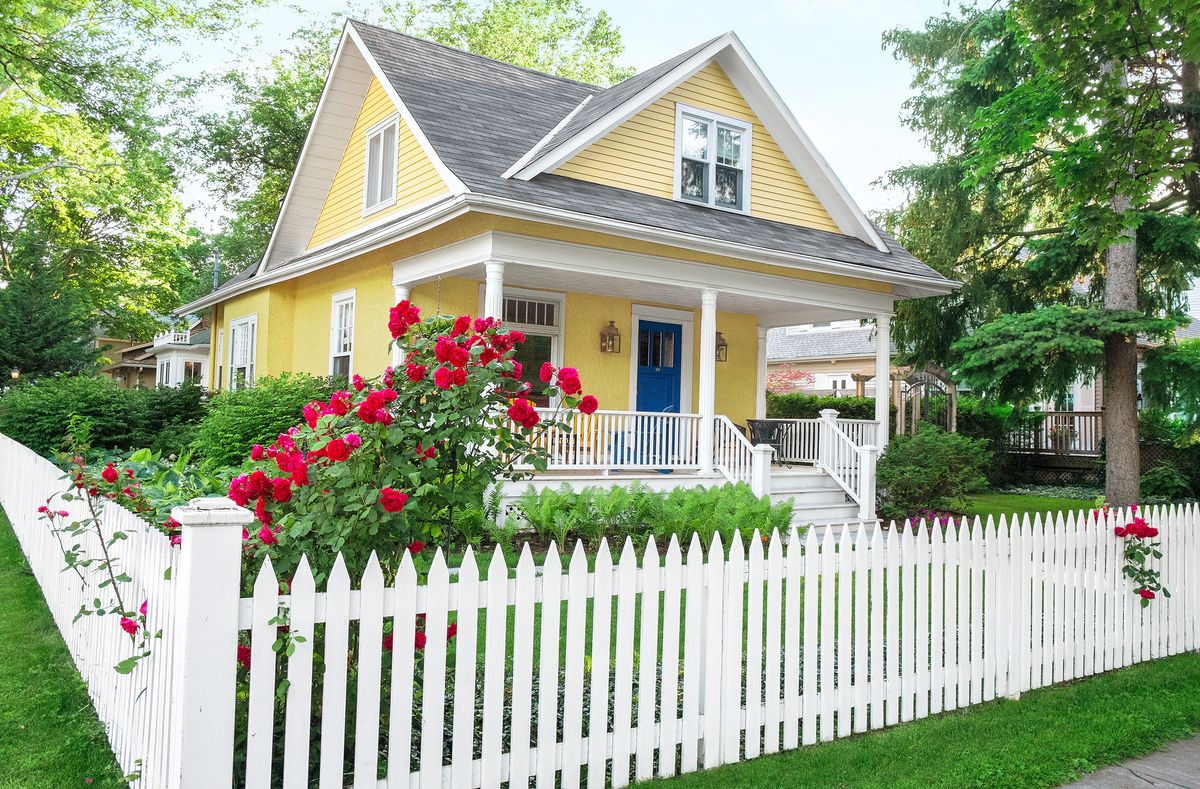A fence is something that should provide safety and protection. It should not command hours of your team each year to maintain. If you’re in the process of building a new fence, make sure you’re selecting materials that last.

5 Fencing Options
Fences come in all shapes, sizes, colors, and materials. Ultimately, you’ll have to decide what your needs are – functionally and aesthetically – as well as your budget and long-term plans.
With that being said, here are five common fencing options ranked in order of least maintenance to most maintenance required.
- Vinyl
Vinyl is arguably the best fencing option for homeowners. This is true for a number of reasons, including the low-maintenance aspects, as well as the diversity of styles and colors.
Let’s start with the maintenance-free aspect of vinyl fencing. Unlike other materials that are prone to rot, rust, and other forms of disrepair, vinyl doesn’t splinter, crack, warp, rot, or rust. It requires very little (if any) ongoing care. Depending on the vinyl fencing manufacturer you purchase from, you might even get a limited lifetime warranty, color-protection guarantees, etc.
As for the aesthetics, vinyl fencing can be produced in any color – including both solid and blended colors. These paints also include fade-free components that prevent even the brightest white fences from turning yellow over time.
If you want something totally hands-off, vinyl is the easy and obvious choice.
- Aluminum
If you want a low-profile fence that has the appearance of iron without all of the same maintenance requirements, aluminum is a great choice. It requires no cleaning, no maintenance, and looks great all year round.
Most of these fences even come with lifetime warranties to protect you against anything that could potentially go wrong. However, you will pay a pretty penny for aluminum – so make sure it fits into your budget before going too far down this road.
- Vinyl-Aluminum Combos
Want the best of both worlds? Aluminum-vinyl combination fences make a beautiful aesthetic statement. Plus, because they consist of two simple materials, you never have to worry about rot, rust, faded paint, etc. A little bit of gentle cleaning every so often will leave you with a crisp look.
- Iron
For a sophisticated look that’s basically guaranteed to hold up over time, you can opt for iron. However, the maintenance requirements are heavily dependent on factors like the iron’s coating process and the climate you’re in.
In order for iron to hold up cosmetically, you have to prevent rust. The fencing manufacturer should apply a specific coat to seal the iron. On top of that, you’ll need to apply a protective coat of wax every year to keep moisture from penetrating the iron and causing it to pit and peel.
- Pressure Treated Wood
Many homeowners like the classic look of wood fences. And, truth to be told, when they’re brand new and well-maintained, a rich wood fence is gorgeous. The only problem is that they don’t stay that way for long.
Pressure treated wood fences generally need to be pressure washed, cleaned, and restained every three to five years. Not only that, but you shouldn’t expect your wood fence boards and rails to last any longer than 10-12 years.
Take Care of Your Fence
It doesn’t matter what material you choose – vinyl, aluminum, pressure-treated wood, or some combination – it’s smart to spend a few minutes every month caring for your fence. If nothing else, some gentle cleaning will keep it looking new and crisp.
Wood fences definitely require the most maintenance. But if you’re proactive, it doesn’t have to be a massive project. In addition to staining your wood fence every couple of years with a high-quality stain– and weather-resistant product, you should occasionally rinse with a mildew cleaning solution.
When it comes to vinyl and aluminum, you really don’t have to do much. Just wash it down with a garden hose every few weeks (or anytime you notice dirt and debris). Iron fences may need to be rubbed down with a protective coat of wax or sealant every now and then as a way of warding off rust.
Ideally, you should go with a low-maintenance option like vinyl, aluminum, or a vinyl-aluminum combo. However, if you do select wood, iron, or some other option that requires more ongoing care, preventive maintenance is the key.
Leave a Reply